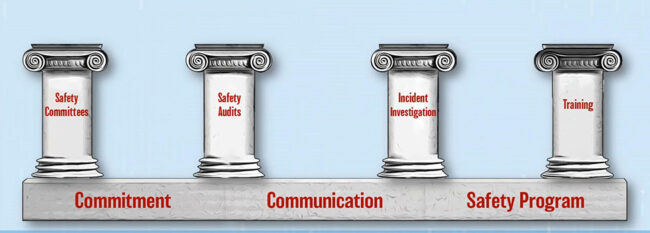Guides and Handbooks
Safety Committee Resource Handbook

Safety Committees: A Top Tool for Workplace Safety
An active and engaged safety committee is one of the best tools employers have to reduce employee injuries. Made of up of representation from across an organization’s departments and leadership, a safety committee can:
- Recommend solutions and take actions to address workplace hazards.
- Open lines of communication.
- Grow a positive safety culture within the organization.
The committee must meet regularly and review safety concerns within the organization. Those employers with 25 or fewer employees may find that a safety committee is worthwhile to reduce hazards and create a safe work environment.
Since 1992, Minnesota employers with more than 25 workers are required by law to have a joint labor and management safety committee.
Handbook Addresses Areas Safety Committees Need to Be Successful
This handbook:
- Outlines Minnesota regulations for safety committees.
- Provides recommendations for effective committee structure.
- Details activities committees can perform to enhance safety within their organizations.
4 Major Issues Covered
The four sections of this handbook help employers start a committee or improve the performance of an existing safety committee:
- Safety Committee Compliance: Details Minnesota statutes and rules regarding safety committees.
- Safety Committee Framework: Outlines the fundamentals of developing and maintaining an effective safety committee.
- Safety Committee Activities: Reviews tasks an effective safety committee undertakes to minimize losses.
- Safety Committee Evaluation: Identifies hurdles a safety committee may face and offers solutions to overcome them. A self-evaluation helps determine the performance of the committee.
MCIT Supports Safety Committee’s Work
MCIT is committed to assisting members with establishing and maintaining effective safety committees and workplace safety initiatives. In particular, safety committees are encouraged to use the following no-cost services and programs offered through MCIT.
Consultation Services: Each MCIT member has an assigned loss control consultant who can assist with a member’s workplace safety and loss prevention efforts in a variety of ways.
Work Wisely: This no-cost program includes a variety of safety awareness campaigns that are ready-to-use for members, including slip and fall prevention, safety culture, computer workstation ergonomics.
Topics




